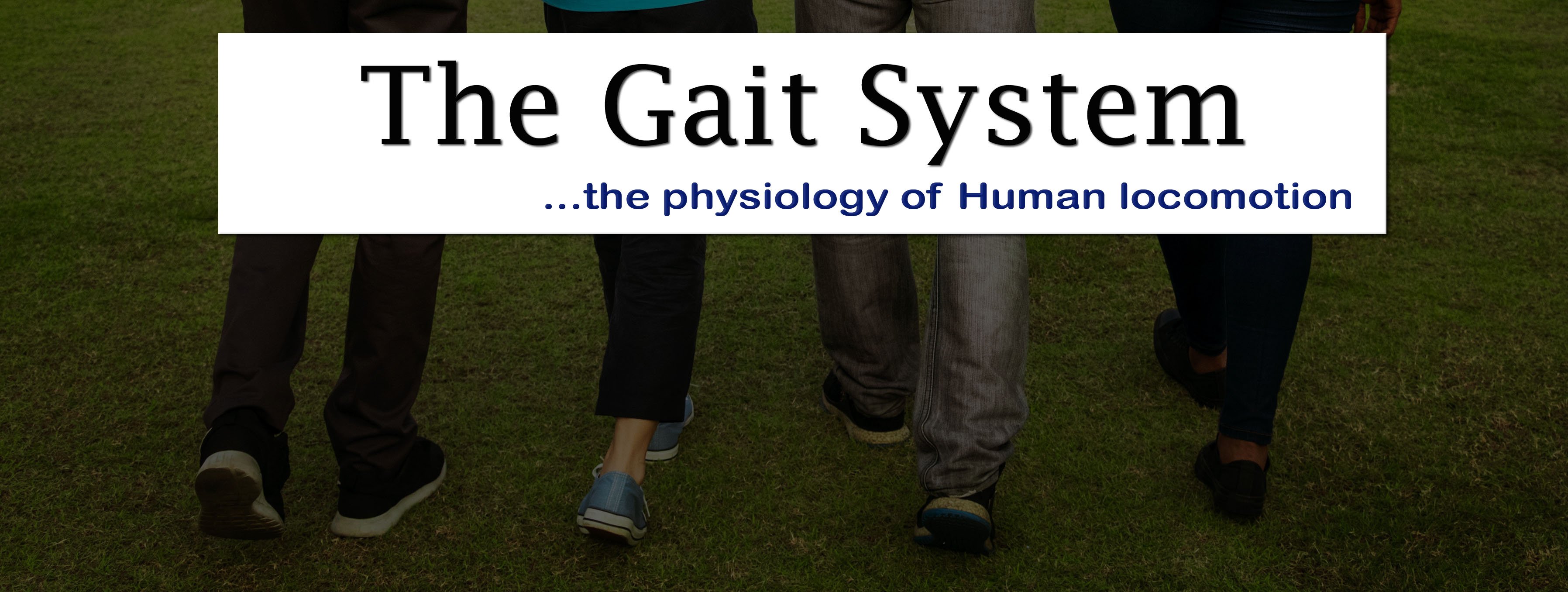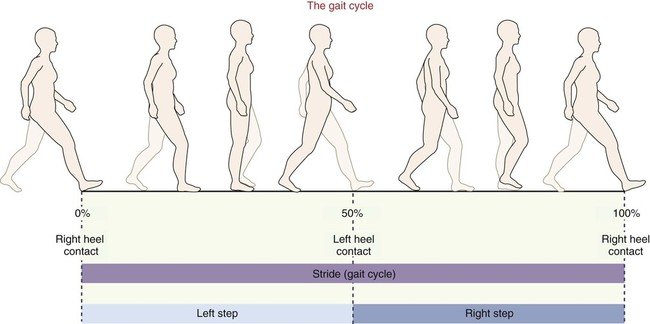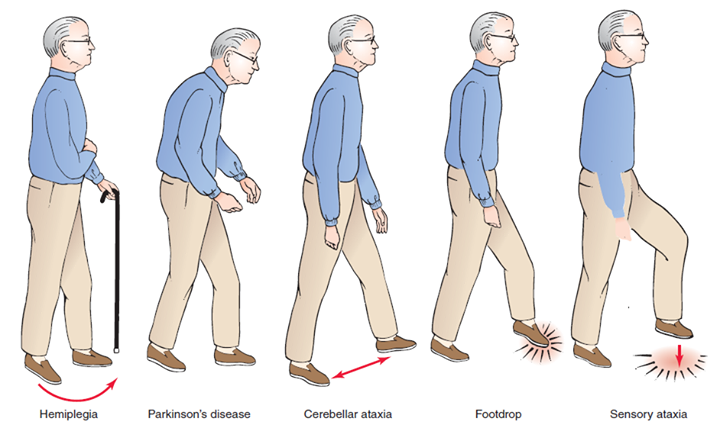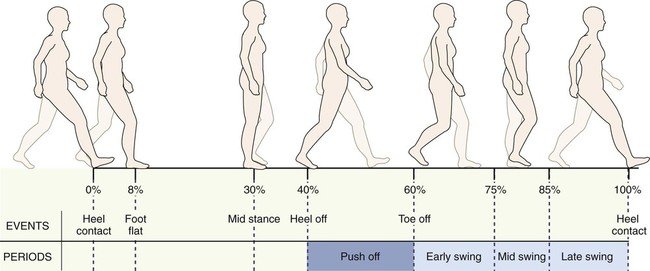The Gait System | How Gait Recognition Works
Table of Interests
Today, you and I will quickly take a look at the topic “The Gait System | How Gait Recognition Works”.
This has become necessary as we have sen overtime that several individuals have been searching for topics related to the above topic The Gait System | How Gait Recognition Works.
However, if you are among those that have been searching for answers to [gait analysis walking, gait analysis physiotherapy, what is gait recognition, gait analysis slideshare, gait analysis equipment, gait analysis pdf, gait analysis ppt, gait analysis physiopedia, The Gait System | How Gait Recognition Works], then you can see that you are not the only one.
Nonetheless, you shall get all this information right here on this blog.
The Gait System | How Gait Recognition Works
The art of locomotion is a very important characteristics of living organisms especially animals, which possess an active mode of movement. These animals move in search for food or to escape from predators in order to survive.
The movement exhibited by animals involves the use of special structures of locomotion that aid their displacement in respect to their body.
Humans as higher animals exhibit a bipedal mode of locomotion, which involves the use of paired hind limbs in propelling the body from one point to another. This movement in man is known as GAIT (walking).

Overview of Locomotion (the Gait System)
The gait system is a cycle of rhythmic sequential actions that propels the body forward by alternate movement of different segments of the body and thereby causing a change position.
The mode of locomotion in humans is accomplished by the rhythmic succession of one gait cycle after another until the desired area is covered. Generally, it is known that we walk in steps; taking one step after another.
This is correct but the human steps are so unique that we don’t lift our legs like robots, but walk with different part of the foot touching the floor at different moment, regulated pressure against floor, coordinated tension in muscles, different degree of flexion, rotation and stiffness of joints.
Sound Cumbersome? Not really, a year old child already walks using the gait and by the age of three he has mastered it just like an adult, although we are not conscious of the details.
There are two classes of Human gait; the Natural gait which is an inherent behavior and the Trained or Learned gait which is learnt or acquired by training.
The natural gait is a common mode of locomotion and it is common to almost everybody while the trained gait involves special training in order to move in a unique pattern.
The natural gaits are the walk, jog, hop, skip, run and sprint and they are meant to propel the body forward at different speed although, they can be modified according to the individual instinct.
The trained gait includes the hand walking and special gaits used in martial art, acrobatics and dancing movements.
Mechanism/Phases of Gait
The human gait is a complex sequence of alternating steps that propels the body in a forward direction. The human Gait (walking) can be described in simple words as a sequence of consecutive steps and strides.
A step is a single step which is recognized by an initial hit of one foot to the terminal hit of the other foot against the floor. A step is the moment a foot makes contact with the ground to the moment the other hits the ground.
A stride is twice as much as a step; it is the moment a foot makes contact with ground until it terminates as the same foot makes contact with the ground the second time.
The stride is equivalent to a gait cycle which is made up of two steps.
Therefore the human locomotion can be breakdown into either steps or strides (A gait cycle) and it works by the function of a propeller and an absorber.
The initial foot (the foot that makes the first contact) is the propeller and the terminal foot is the absorber. The propeller projects the center of gravity of the body to lean forward lifting the weight of the body away from the foot.
At this point the body tends to fall in the forward direction until the other foot (absorber) advance ahead to catch the weight.
If the second foot is prevented from catching the weight at the right time probably by an obstacle, the body will surely fall and you’ll have yourself already messed up on the ground.

Now let’s take a closer look at the strides that makes our walk. For a more detailed analysis the gait cycle is divided into two phases and eight sub-phases.
These phases describe the initiation, progression and termination of the feet as they make the cycle. The two phases that makes up the gait cycle are the Stance and the Swing.
The stance is the preparation of the foot that is taking the cycle while the swing is the clearance of the ground by this same foot.
The stance phase covers 60% of the whole gait cycle and it consists of five sub-phases while the swing phase covers the remaining 40% with three sub-phases.
See Other Articles Others Are Reading
- History As A Science | What Makes History A Science
- Fire And Safety | Basic Fire Safety Tips & Fire Safety Rules
- Myths Surrounding Exercises | All You Need To Know Concerning Exercises.
- Criminal Profiling – Facts Over Fiction | Criminal Profiling Techniques
- 5 Tips For Students Who Are Considering Graphic Design As A Career.
- Evaluation Of Learning: How To Know If The Children Are Learning
- Initial Contact (heel strike)- this is the beginning of the stance phase and this is characterized by the contact of the heel of the foot taking the gait cycle (Foot A) with the surface or floor. This phase is equivalent to the absorption of the previous gait cycle.
- Loading Response (foot-flat)- At this phase the foot is flat, preparing the foot for propelling the body.
- Mid-Stance -At this moment the foot propels the body forward (and slightly to the opposite side o f the foot).
- Terminal Stance (heel-off)- at this point the other foot (Foot B) picks up the body weight and serve as a support for the swing phase which is the clearance of the distance.
- Pre-Swing (Toe-off) – this phase is the initiation of the swing phase. At this moment, the toe of the first foot (Foot A) leaves the ground.
- Initial Swing – at this phase the foot is off the ground and the body weight is only on one foot support. The knee flexes to about 40o to keep the foot (Foot A) further away from the ground.
- Mid Swing – At this phase the knee flexes to about 60o and extends immediately. The foot extends forward as far as ahead the body to pick-up the weight.
- Late Swing –this phase end the swing by making the foot in contact with the surface and absorbing the body weight against the surface.

Gait control by CNS
I hear somebody says am not aware of all these, all I know is that I lift my leg and take steps to wherever I want to go.
Then if you are not aware then something has to be aware- the CNS.
The central nervous system (CNS) is the control house of the human gait.
It monitors the steps we take in relation to the surface we walk on, the distance needed to be covered and the energy that would be expended.

The gait system is controlled differently by the two parts of the CNS; the spinal cord and the brain.
The spinal cord regulates the rhythmic alternate movement of the leg and body as a result of rhythmic firing of the Central Pattern Generators (CPG) that is present throughout the tracts.
As soon as there is need for complexity in gait, the control now extends to the brain; the cerebral cortex and the cerebellum. The cerebellum comes handy when identifying errors and mistakes in walking.
The spinal cord controls the left-right alternate movement of the leg and had already outlined a pattern of the gait.
But if of sudden you stump your feet against a stone or you suddenly discovered where you’ll be placing your foot is wrong, the cerebellum discovers the sudden error in the gait pattern and definitely make a quick correction, this is why you are able to regain your balance quickly and continue with your walk like nothing ever happened.
The cerebellum is also involved while learning special movements.
It identifies and correct errors as you practice to master the movement.
This is the reason we become more error free in what we do the more we practice.
This action of the cerebellum is known to be as “error/correction,” because the cerebellum responds to abnormalities in posture in order to coordinate proper movement.
The cerebral cortex is the commander of the overall action.
It controls the conscious initiation and modulation of the gait.
The cerebral cortex gives the instruction of the start, speed and end of the gait (walk) and this is under our will. Thus, we decide when to walk, how fast we walk and when to stop the walk.
Parameters Affecting Gait
There are parameters that affect gait and this causes variations in individual gait system.
A general parameter is Age which is majorly influenced by Height. Difference in age (height) causes a variation in step speed, stride distance and timing. As the age of a child increase (or the taller he gets) the longer his stride will be and the further his step will be.
That is there is an increase in velocity as a child gets taller.
At old age, the velocity falls; this is because the regions regulating gait speed in the cerebral cortex is less active, and therefore Grannies has pick their steps slowly. Gender is also a parameter or factor that affects gait.
This is evident when you see the two genders walk. The feminine gender tends to walk with smaller step width (distance between the feet) with small plantar (sole) contact area and more pelvic movement than their masculine counterpart.
Other parameters include Body weight, Ethical background and Emotional status.
Irregular/Abnormal Gait
There can be abnormality or irregularity in gait. This occurs when there is an irregularity in the gait pattern due to disturbance in the control tracts. This abnormality can be developmental which develops over time and neuro-degeneration, alteration of the nervous system.
There are several gait abnormalities but the most common, which would have been experienced by almost everybody is the Antalgic gait generally known as limping.
This is caused by pain that appears or worsens when bearing weight on an injured or diseased limb or part of the limb.
This causes the victim reduce or lift away the body weight reaching the injured part thereby causing an abnormality in the person’s gait. Other abnormalities occur as a result of neuronal or muscular disorders.

Gait Analysis and Application
The gait analysis is a bio-mechanical mobility examination of the gait cycle. It involves the examination of an individual’s gait in order to gain information about abnormalities in movement or dysfunction in the lower limbs or neural control tracts.
It involves using special techniques and equipment/apparatus in taking measurements of quantitative parameters, and thereby interpreting these measurements to draw a conclusion about the individual.
The gait analysis technique is of good application in medical diagnosis.
The analysis reveals the causes of gait abnormalities, and also gives hint if there is an underlying pathology or dysfunction of a part of the body involved in gait.
The gait analysis is also used in determining the treatment or correction pattern for people with abnormal gait. It also comes handy in improving the performance of athletes and also finding suitable footwear.
The human gait is a very interesting and unique, but complex sequence of actions.
This complexity is simplified by the function of our inborn intelligence; I wonder if we are to be schooled to learn how to walk- learning the phases it takes to make a stride and the degree of supination or pronation of the joints at each phase.
I think some people will never have interest in walking.
That’s the much we can take on the topic “The Gait System | How Gait Recognition Works”.
See Articles Others Are Reading
- Study Abroad In Canada | See Top 10 scholarships To Study Abroad In Canada
- International Masters Scholarship at the University Of Oulu
- Fully funded Singapore International Scholarship
- Fully Funded Duke University International scholarship
- Kings College London International Scholarship
- All Harvard University Scholarships as well as Harvard University Full Scholarships ,Scholarships For Psychology Major | Psychology ScholarshipsAll JMU Scholarships & How To Apply | JMU Scholarship Application
Scholarships To Pay Off Student Loans | Student Debt Relief Scholarships
Scholarships For African American Students | African American Scholarships
IIE Study Abroad Scholarships | Study Abroad Scholarships
Pennsylvania Scholarships | Verizon Pennsylvania Scholarship Fund
Google & Bertelsmann Fund 75,000 New Udacity Scholarships In Europe
Golf Scholarships | Golf Scholarships In USA For International Students
Asian American Scholarships | Japanese American Scholarships
4 Year Scholarships | List Of Full Ride Scholarships
Scholarships In Indiana | Indiana Scholarships For Education Majors
BMO Scholarship Program | BMO Diversity Scholarships
Jewish Scholarships | Jewish Scholarships In Los Angeles
UK Government’s Global Scholarship Programme | Apply Now
University Of South Carolina Scholarships | USC College Of Arts & Science Scholarships
Cancer Scholarships To Fund Cancer Studies & Researches | Cancer Research Grants


Leave a Reply